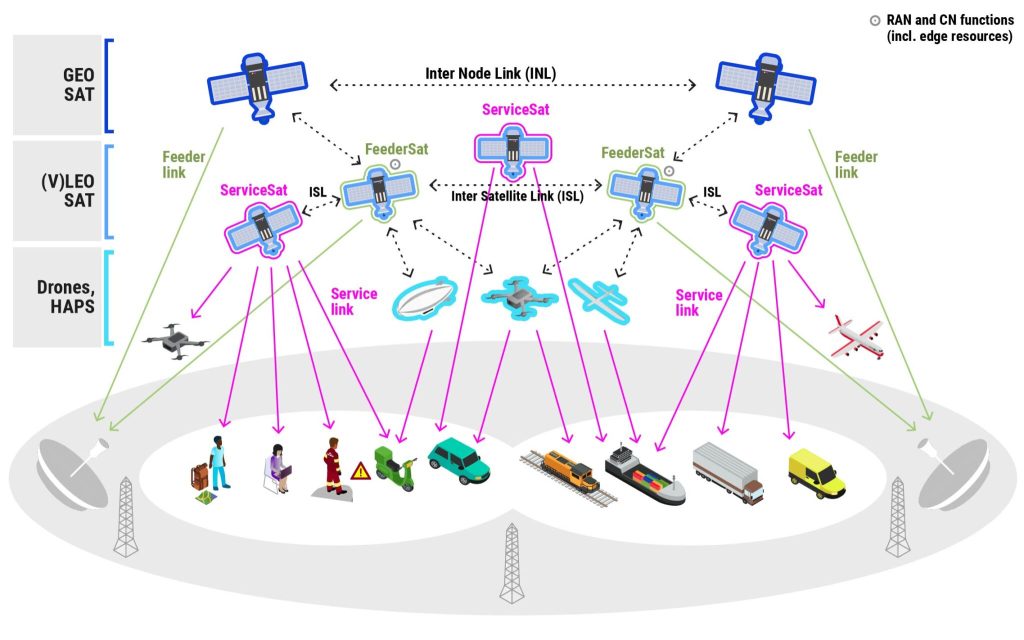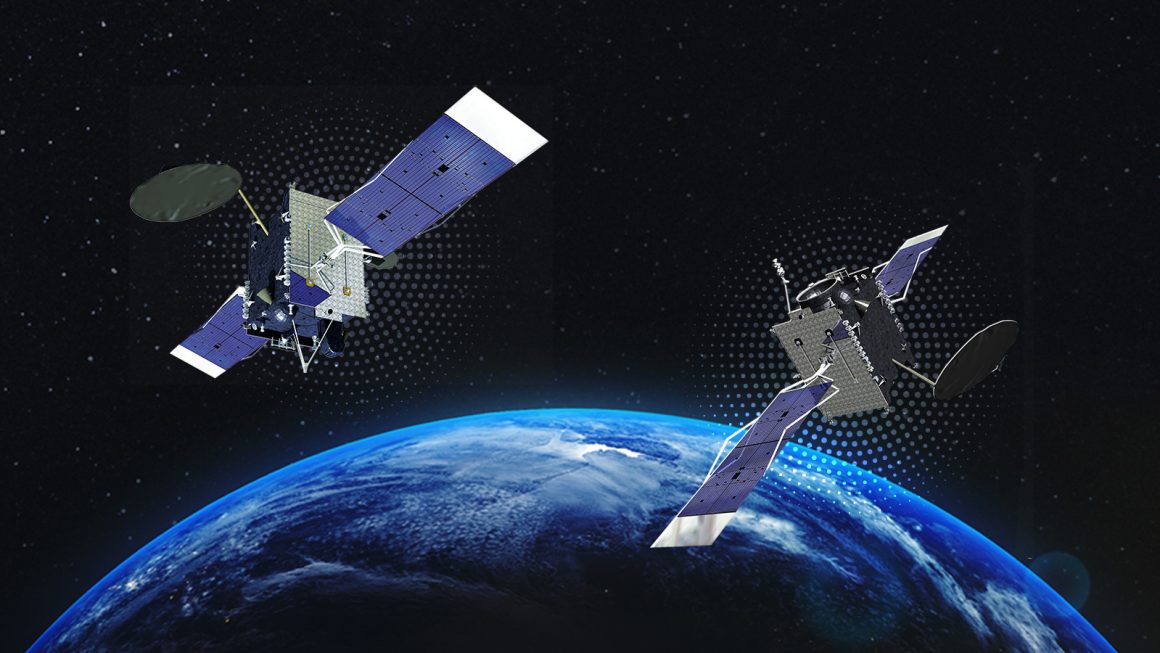European Union-funded project 6G-NTN kicked off in January 2023 to explore integration between future 6G technology and non-terrestrial networks. Marking the initiative’s 30-month anniversary, the group published a summary of the initial results achieved so far.
One of the outcomes is a 3D multi-layered network architecture encompassing a three-layer design:
• HAPs serving as flexible nodes for local capacity and coverage enhancement
• Two LEO constellations (400 km to 800 km altitude) supporting C-band and Q/V-band connectivity
• An overlay of three GEO satellites
6G-NTN proposed two architectural solutions for the LEO constellations: One is a conventional architecture consisting of LEO satellites with the same functionalities and roles. The second is a distributed architecture made up of heterogeneous satellites like “service satellites” and “feeder satellites”.

“The rationale behind the distributed architecture is to maximise the service link throughput by using almost all available power and mass in the service satellites,” the report reads.
“Conversely, feeder satellites should have enough available power and mass to implement all necessary Radio Access Network (RAN) and, eventually, Core Network (CN) functionalities in space.”
6G Waveform Candidates
The European initiative also analysed potential ways to support the development of a natively integrated air interface for 6G services in non-terrestrial networks.
Among the preliminary set of candidate waveforms are:
- Cyclic Prefix Orthogonal Frequency Division Multiplexing (CP-OFDM)
- Weighted Overlap and Add OFDM (WOLA-OFDM)
- Discrete Fourier transform spread OFDM (DFT-s-OFDM)
- Filter – OFDM (F-OFDM)
- Block Filtered OFDM (BF-OFDM)
- Universal Filter Multi-Carrier (UFMC)
- Orthogonal Time Frequency Space (OTFS)
“A major advancement is the design of an AI-enabled RAN Intelligent Controller (RIC) for dynamic resource allocation across terrestrial and non-terrestrial networks in both real-time and non-real-time,” the initial results report reads. “To this end, the project has designed an architecture, in line with the above architectural solutions, leveraging AI Mobile Edge Computing (MEC) servers to host the AI agents for model training, inference, testing, and management.”
Use Cases and Sustainability
6G-NTN has defined seven use cases and identified corresponding user requirements:
- Maritime coverage for search and rescue coast guard intervention
- Autonomous power line inspection using drones
- Urban air mobility
- Adaptation to public protection and disaster relief or temporary events
- Consumer handheld connectivity and positioning in remote areas
- Continuous bi-directional data streams in high mobility
- Direct communication over satellites
These requirements and constraints have been structured and presented for three representative User Equipment (UE) types:
- Handheld UE
- Drone UE
- Mounted UE
The initiative also shared its research activity on sustainability. According to the results report, 6G-NTN “addressed reference traffic scenarios and developed sustainability metrics, including energy efficiency. These efforts also considered the broader environmental footprint and handprint of 6G-NTN-based systems, enabling the definition of initial sustainable design principles.”
The European initiative is set to end in December 2025. Until then, “these initial outcomes provide a solid foundation for the final phase of development and validation,” the report points out.



